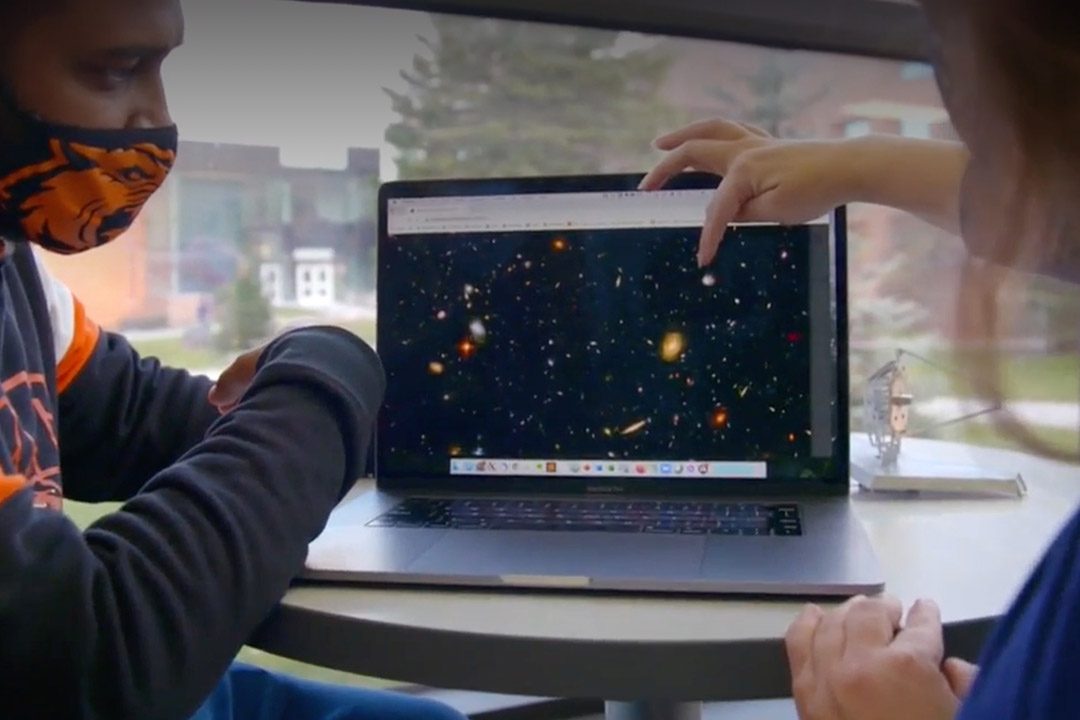RIT scientists unveil Citizen Science Project to search for distant galaxies
‘People feel ownership when they help make discoveries,’ says RIT astrophysicist
Citizen scientists are needed to help capture scientific information about distant galaxies and the early universe.
Researchers at Rochester Institute of Technology want your help studying galaxies far, far away. It may seem like something out of Star Wars, but the goal is to gather scientific information to learn more about distant galaxies and the early universe.
In collaboration with NASA, RIT unveiled a website asking for volunteers to join an effort to take critical measurements that will aid astronomers in identifying the “fingerprints” of different chemical elements present in galaxies and measuring their distances.
NASA's citizen science projects are collaborations between scientists and interested members of the public. These volunteers, known as citizen scientists, have helped make thousands of critical scientific discoveries, and hundreds have been named as co-authors on refereed scientific publications.
For this project, called “Redshift Wrangler,” RIT researchers are studying the spectrum measured from galaxies, or how their light is distributed across different colors, like a rainbow. “Citizen science can often succeed where traditional science can’t,” said Sadie Coffin, a Ph.D. student in RIT’s astrophysical sciences and technology program. “With our abundance of galaxy spectra, Redshift Wrangler takes advantage of a creative method to perform our large-scale analyses while opening up scientific discourse that has historically been exclusive.”
By looking at the spectrum of a galaxy, scientists can identify spectral features that occur at different wavelengths. Different elements have peaks and dips that always occur at the same places, like a fingerprint. They can determine which elements are present by tracking down those characteristic patterns.
Once key features are identified in the spectra, RIT researchers can use the measurements to answer many scientific questions. For example, the volunteers’ measurements will help them understand how galaxies and their surrounding gases are related to the universe’s large-scale structure, how supermassive black holes contribute to their galaxy’s evolution, and how Dark Energy drives the acceleration of the universe’s expansion.
“The spectra of galaxies allow us to look into the past,” said Jeyhan Kartaltepe, associate professor in RIT’s School of Physics and Astronomy and Redshift Wrangler PI. “If we’re going to understand better our early universe and how galaxies have changed over cosmic time, we need to study these far away systems. This will give us critical information about the history of our galaxy and how we fit in.”
Working through each individual spectrum would be too time consuming for a single person, noted Kartaltepe, but with the help of citizen scientists, they can accomplish more science and work through data faster. Bringing in citizen scientists also lets the team review individual classifications, receive feedback from different scientists and non-scientists, get different perspectives on challenging data, and provide more access to becoming involved in research for participants at all levels of learning.
For details on the project and how the community can get involved, go to the Redshift Wrangler website.








